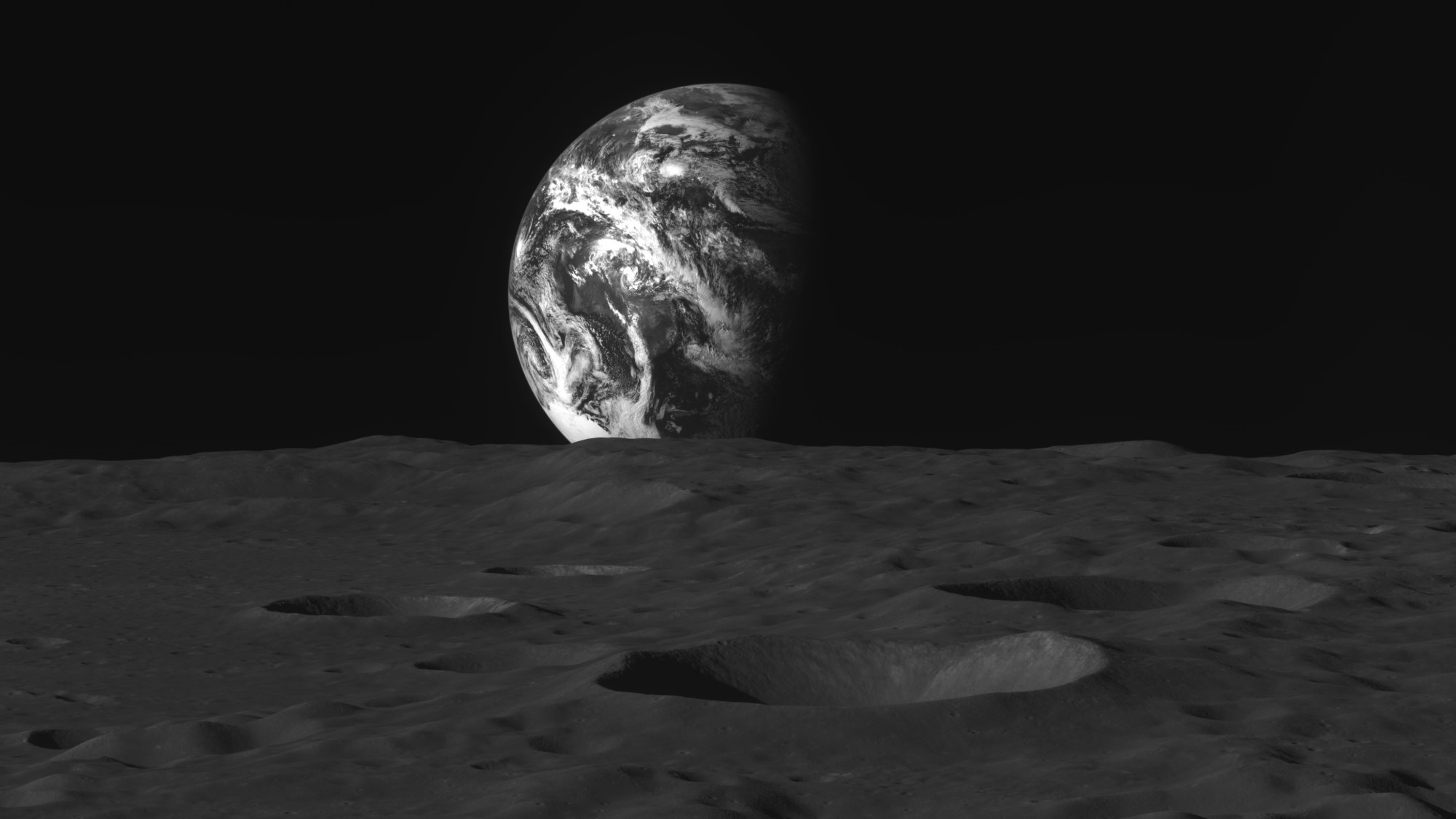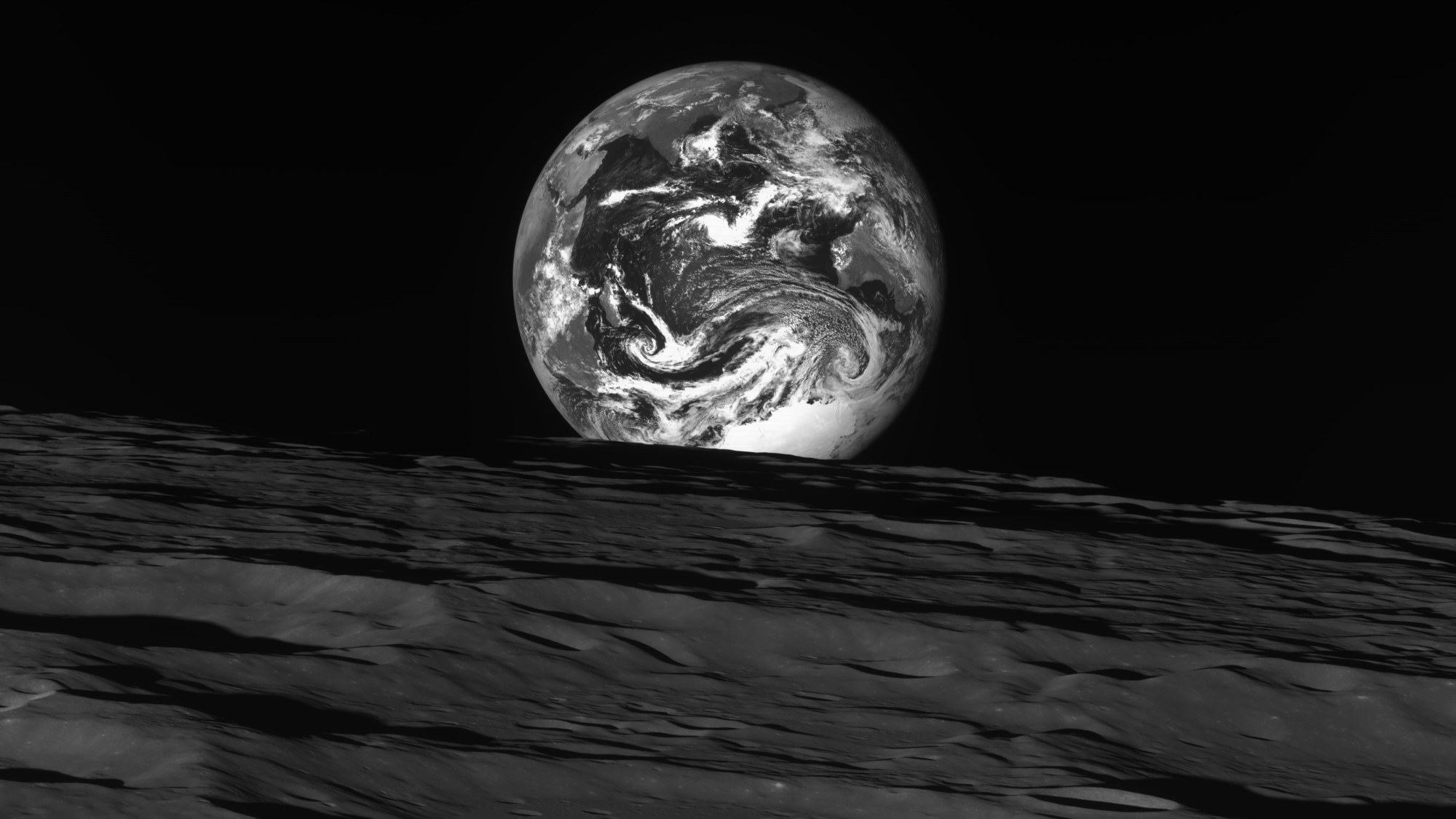South Korea's moon mission snaps stunning Earth pics after successful lunar arrival

South Korea's first moon mission is beaming back images of home from its position in low lunar orbit.
Danuri, also known as the Korea Pathfinder Lunar Orbiter (KPLO), launched aboard a SpaceX Falcon 9 rocket in early August last year and arrived in lunar orbit four months later, in mid-December. The milestone adds South Korea to the exclusive club of nations with successful moon missions, which also includes Japan, China and India, among others.
The Korea Aerospace Research Institute (KARI) has now released images from the $180 million Danuri showing the crater and textured lunar surface in the foreground with the distant Earth behind.
Related: South Korea's moonshot will explore lunar magnetic mysteries and more
The images were taken on Dec. 24 and Dec. 28 respectively by the Lunar Terrain Imager (LUTI), which was developed by KARI. Engineers will use images from the camera to help identify sites for a robotic South Korean lunar landing mission targeting launch around 2032.
#달 상공에서 #다누리 가 보낸 인증샷📷✨이 사진은 다누리에 탑재된 고해상도 카메라(LUTI)를 이용해 촬영하였으며, 달 크레이터들과 지구의 모습을 선명하게 확인할 수 있습니다.📷사진 설명1)12월 24일 달 상공 344km에서 촬영한 사진2)12월 28일 달 상공 124km에서 촬영한 사진 pic.twitter.com/pBC5Dw5X9MJanuary 3, 2023
The 1,495-pound (678 kilograms) KPLO completed a series of burns during mid- and late December, with the spacecraft entering its planned orbit with an average altitude of 60 miles (100 kilometers) above the lunar surface on Dec. 26, according to a KARI statement.
The orbiter is currently undergoing commissioning before starting its official science mission, which is scheduled to last about a year.
Get the Space.com Newsletter
Breaking space news, the latest updates on rocket launches, skywatching events and more!

Five of Danuri's six payloads were developed by KARI, but NASA also has an instrument on board. ShadowCam was designed to scope out permanently shadowed regions at the lunar poles for hints of water-ice deposits, potentially providing valuable data for future missions in NASA's Artemis program, which aims to land astronauts on the moon in 2025 or 2026.
Follow us on Twitter @Spacedotcom and on Facebook.
Join our Space Forums to keep talking space on the latest missions, night sky and more! And if you have a news tip, correction or comment, let us know at: community@space.com.

Andrew is a freelance space journalist with a focus on reporting on China's rapidly growing space sector. He began writing for Space.com in 2019 and writes for SpaceNews, IEEE Spectrum, National Geographic, Sky & Telescope, New Scientist and others. Andrew first caught the space bug when, as a youngster, he saw Voyager images of other worlds in our solar system for the first time. Away from space, Andrew enjoys trail running in the forests of Finland. You can follow him on Twitter @AJ_FI.









